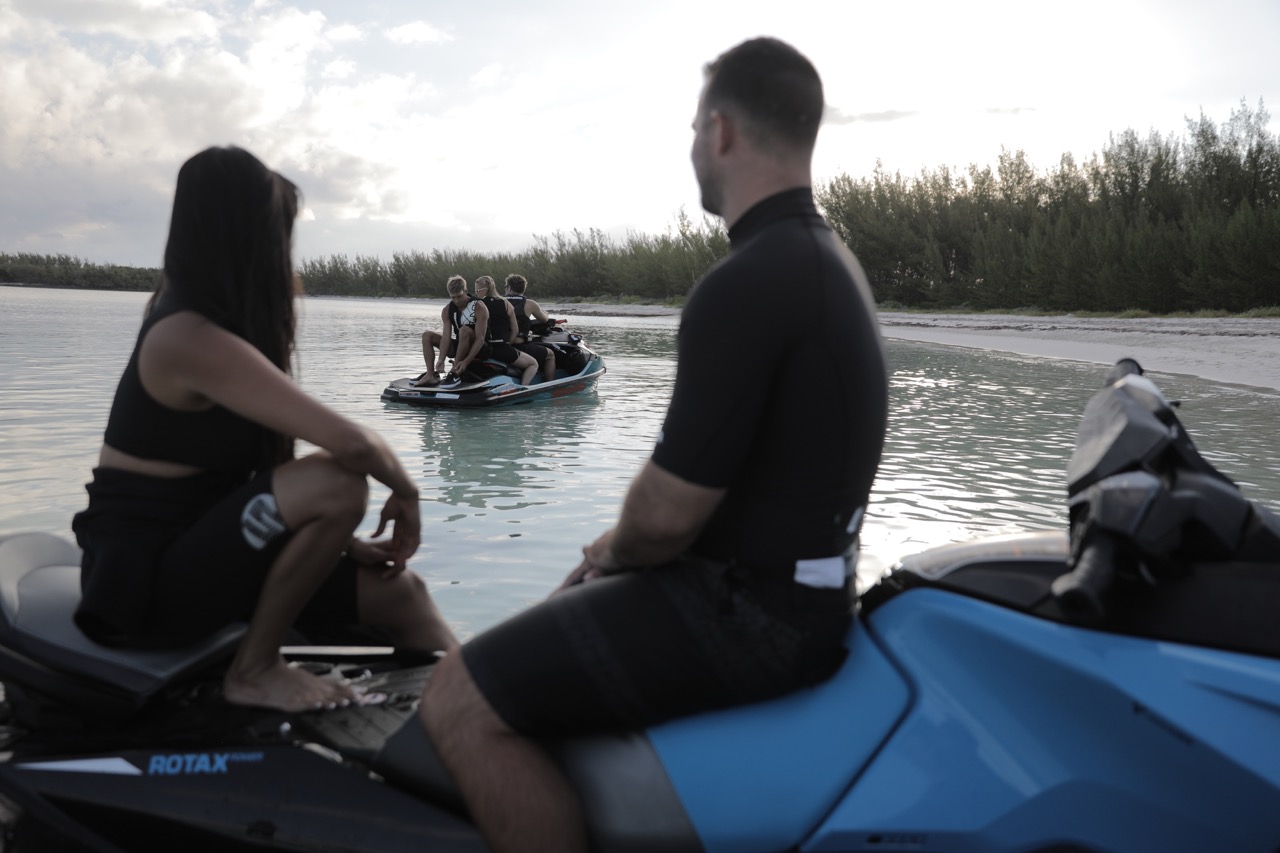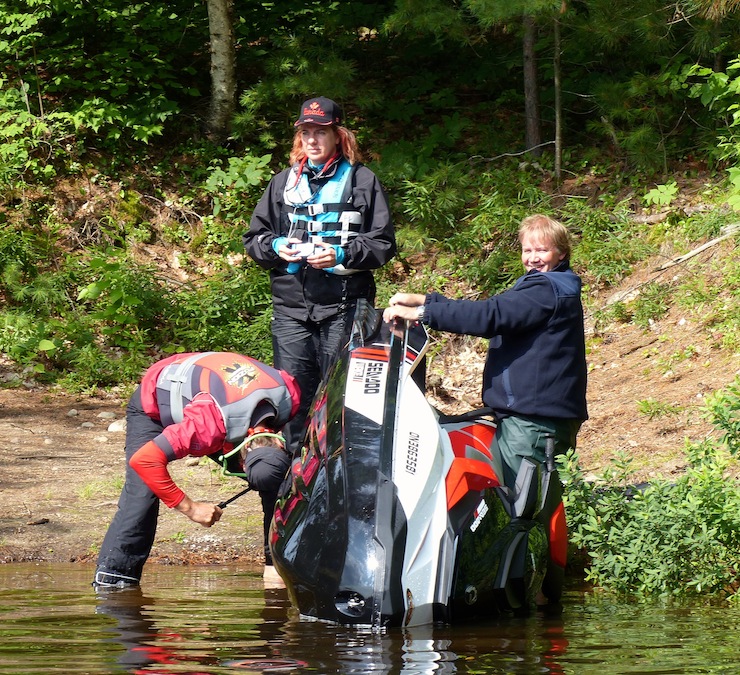Common Personal Watercraft Repairs To Avoid…
Related: PWC Towing Tips
So what are operator caused personal watercraft repairs? A jet ski like my Sea Doo watercraft is generally pretty bulletproof. Sure, like any other machine, there can be unexpected mechanical issues on PWC adventures. But, with proper maintenance and operation, these are mostly few and far between.
So what are the most common reasons Sea Doo, jet ski or waverunner PWC’s have to go in for service (other than being old and plain worn out)? Mostly, they’re operator caused personal watercraft repairs. And after consulting with my Sea Doo dealer, here are my top 5…
Personal Watercraft Repairs #1 – Impeller Issues
Your most likely operational trouble on the water may come from sucking debris up into the jet pump. The intake grate is underneath, on the hull. Weeds or rope jammed into this grate can block the flow of water through the impeller of the jet drive mechanism. This limits throttle response and forward thrust of your jet propulsion system. Your engine may also overheat. These blockages are debilitating and annoying. You can sometimes remove them with procedures outlined in your owner’s manual. Or with patience and a sharp knife & pliers. But the worst jam-ups require a visit to your dealer.
 However, a pebble or piece of wood can slip through the grate into the impeller itself. Such ingestion can occur almost anywhere. But it happens most commonly in shallow water or where debris is stirring up. Like in a lock, at a marina or behind a large boat in a slow zone. These small items can jam or even break the impeller, causing serious damage drive shaft and engine.
However, a pebble or piece of wood can slip through the grate into the impeller itself. Such ingestion can occur almost anywhere. But it happens most commonly in shallow water or where debris is stirring up. Like in a lock, at a marina or behind a large boat in a slow zone. These small items can jam or even break the impeller, causing serious damage drive shaft and engine.
 So if you hear any kind of an unusual rattling noise from below, or feel any sudden diminishing of throttle response, shut off your personal watercraft immediately. If you can get it to shore and turned on its side, look inside the grate for any foreign object (having an LED flashlight is handy). With luck, the offending object may be visible. If so, you may be able to remove it with the proper emergency tool before any significant damage is done. Otherwise, unless you’re able to proceed in limp home mode, you’re in for a slow tow.
So if you hear any kind of an unusual rattling noise from below, or feel any sudden diminishing of throttle response, shut off your personal watercraft immediately. If you can get it to shore and turned on its side, look inside the grate for any foreign object (having an LED flashlight is handy). With luck, the offending object may be visible. If so, you may be able to remove it with the proper emergency tool before any significant damage is done. Otherwise, unless you’re able to proceed in limp home mode, you’re in for a slow tow.
Personal Watercraft Repairs #2 – Engine Flooding
This mechanical issue involves the engine flooding with water, which can result in hydrolock. Typically, this occurs when the operator forgets to secure the drain plugs or the PWC flips upside down and the engine compartment fills with water (often when being improperly turned right side up). The other most common flooding problem happens after something else has gone wrong (such as an impeller issue or running out of gas). Then the jetski has to be towed to shore, and that’s tricky.
If you don’t tow slowly (check max recommended speed in oner’s manual) or clamp off the main intake hose to the motor, water forces its way into the engine cylinders through the exhaust ports. Now it won’t start and that’s called hydrolock. Your dealer can fix a flooded engine comparatively easily if you get it in quickly. But any delay could result in long term water damage. Also, trying to start a flooded engine without thoroughly servicing it first, is a definite no-no.
Personal Watercraft Repairs #3 – Hitting Something
This area of operator caused personal watercraft repairs is largely cosmetic. Many scratches, gouges, dings and chips result from improper docking techniques or from not using good PWC fenders for protection while docked. While such abrasions don’t usually interfere with operation, they are obvious, unsightly and can negatively impact resale value.
On the other hand, hitting obstacles in the water while Sea Doo riding is much more serious. Start with the obvious safety concern for the operator (and passengers) of hitting anything solid at any speed. Impediments like underwater rocks, shoals or deadheads can rip though a personal watercraft’s protective outer surface or even crack the hull. Either way, just like if you forget to replace or tighten the drain plugs, your jetski could soon water log and may even sink. Leading among other things, to a flooded engine, see above.
Personal Watercraft Repairs #4 – Improper Winterizing
Next, mechanical issues can result from incorrect preparation and storage of your jet ski for the off-season. Or from not getting it ready properly to start a new season of Sea Doo riding. Similar troubles can also happen if you’ve left your personal watercraft sitting for a long time before pressed it back into service again. In either case, batteries are especially problematic if not regularly re-charged. But having your unit serviced properly at your authorized PWC dealer can avert all storage-related issues.
Personal Watercraft Repairs #5 – Improper Break In
While less of an issue with 4-stroke engines, improper break in could cause unexpected trouble in the future. For any brand new engine, I avoid hard acceleration, vary speed and don’t pin it for the first ten hours or so of operation. Some may consider this cautious overkill, but why take the chance with a jetski you want to be as reliable as possible for as long as possible?
You can avoid many hassles by familiarizing yourself with your owner’s manual. That’s the best way to get a basic understanding of how your personal watercraft functions and operates. What’s more, the troubleshooting section included in most manuals is a good place to start if something abnormal starts happening. So always carry your manual on board.
Thanks to Dave Stedman for offering the tip to tighten battery cables more than once a season. I’d also include making sure the battery is properly charged before heading out!
With a little advance preparation and knowledge, plus on going TLC, a savvy operator can avoid lots of expense and aggravation. And now that you know about my top 5 Operator caused personal watercraft repairs, you can have a whole lot more hassle-free fun on the water!
Check out my favourite Sea-Doo rides!
If you enjoyed this post, check out my other riding tips.
The tips and advice in this article are the opinions of the author, may not work in every situation and are intended only for the convenience and interest of the reader, who has the personal responsibility to confirm the validity, accuracy and relevancy of this information prior to putting it to their own use.
Like This Post? Follow Me on Facebook!



